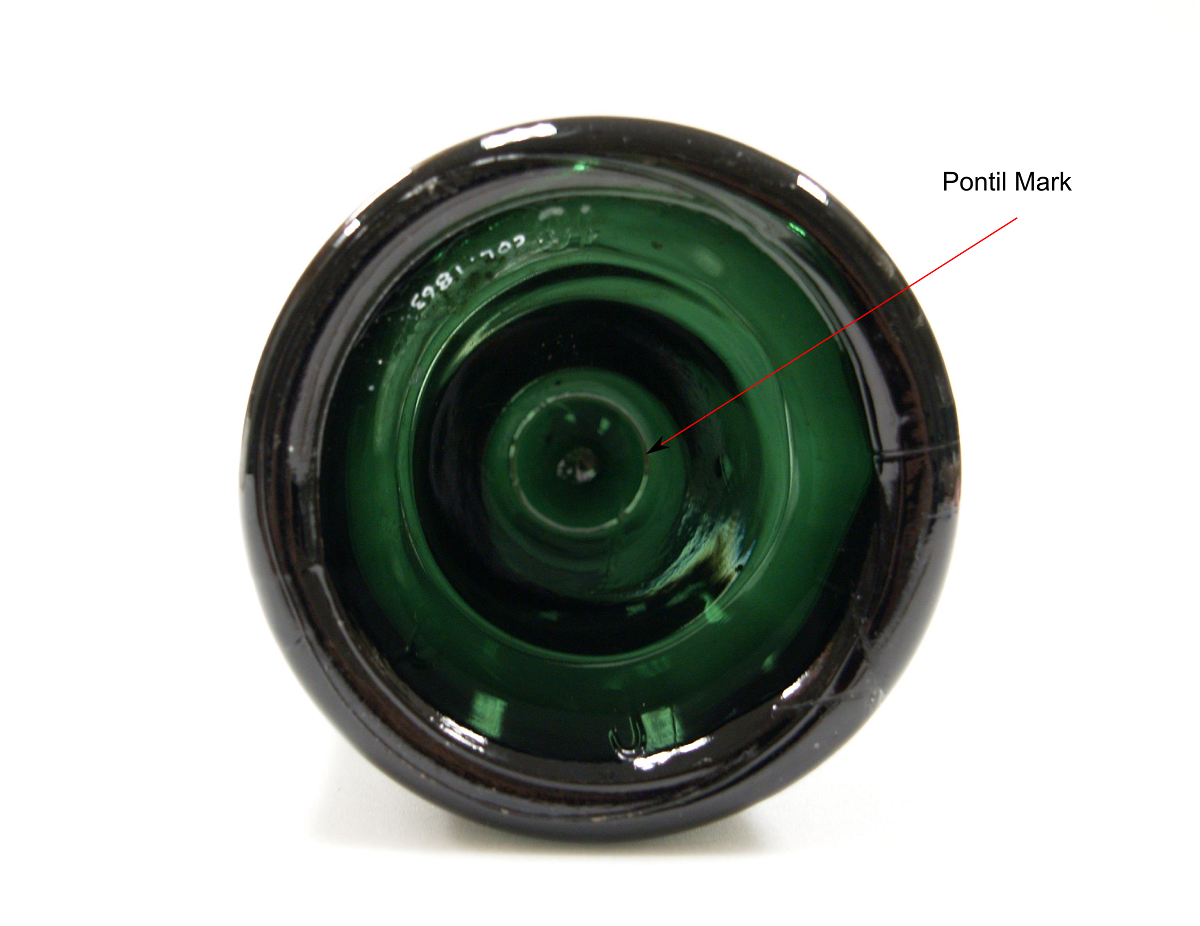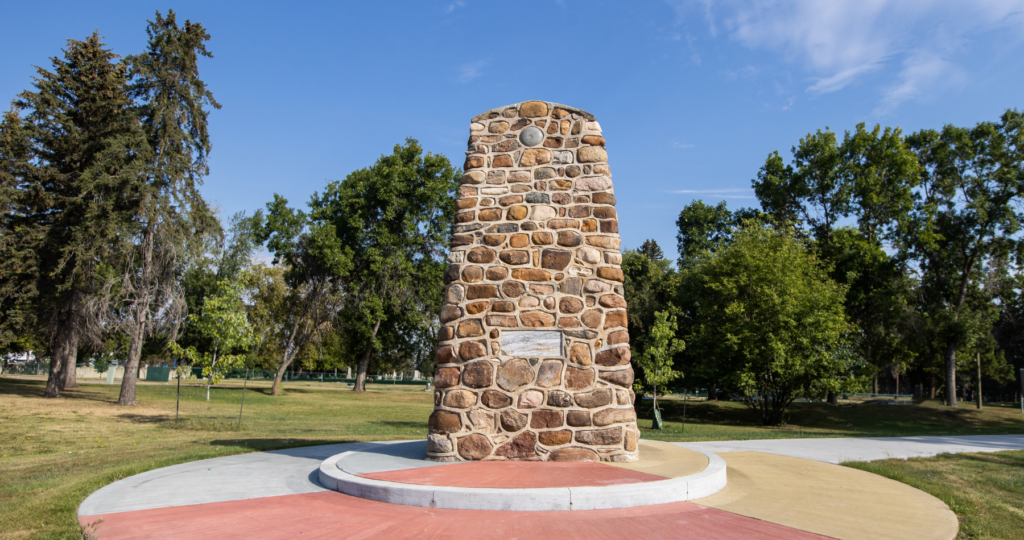Post Category : Local Archaeology Special Finds
Purple Glass = Pre World War I
When we find post-European contact sites in Alberta we find a variety of historic resources including: cabins, ceramics, metal, and glass. The style of each of these can be a good indication of age and, in particular, glass has several features we look for. This includes molds, pontil marks (Figure 2), lip forms (Figure 1), and colour.

Figure 1: Bottle lips crudely applied by hand prior to 1880s when lipping tools invented (Source: Wikimedia Commons)

Figure 2: Pontil mark on the bottom of glass bottle on all bottles dated before 1860 (Source: Wikimedia Commons)
This year, while assessing a gravel pit along the North Saskatchewan River, we found a multi-component site (FcPs-14) with both a pre-European contact First Nations campsite and a post-European contact dwelling. In addition to the typical lithic debitage, we found a cabin depression, ceramics (Figure 3), metal (Figure 4), and glass artifacts. One shard of glass caught my eye because of the purple tint to the glass (Figure 5).

Figure 3: Ceramic recovered from FcPs-14

Figure 4: Nail recovered from FcPs-14

Figure 5: Purple glass recovered from FcPs-14
From 1885 to 1914, manganese dioxide was used as a clearing agent by glass makers to make sure the glass remained clear. However, when exposed to the sun over time, the manganese dioxide in the glass will cause the glass to turn a purple tint. The main source of this clearing agent was Germany. This supply was cut off with the outbreak of World War I. After World War I, selenium became the preferred clearing agent. When exposed to the sun’s rays, selenium will turn glass yellow.
By recovering this piece of glass, we can make a reasonable interpretation that this component of the site dates to before, or shortly after, 1914. Even a seemingly commonplace artifact like a shard of glass can tell us a lot about a site.



